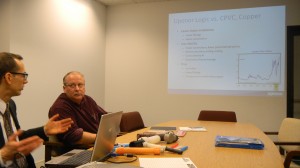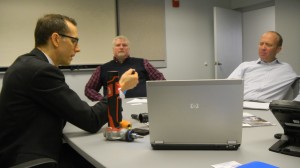With a national circulation of approximately 325,000 trade professionals and design enthusiasts, Dwell magazine is now one of the most influential publications in the residential design and construction field. Landing content on its pages is a huge “get” for any marketer.
In a presentation during Dwell on Design in June in Los Angeles, editor in chief Amanda Dameron shared a number of insights on the best ways to approach her editorial colleagues with story ideas. Whatever the content you have in mind to pitch, it must inevitably help the Dwell staff answer a fundamental question asked of every potential feature article:
“How do we best tell a story that appeals to [design] professionals?”
Essentials: All five Dwell editors are open to receiving pitches and other correspondence. But, according to Amanda, when it comes to formal press communications, two are key: Send general-announcement press releases to senior editor Kelsey Keith ([email protected]), based at Dwell’s New York office. Direct new-product information to associate editor Diana Budds ([email protected]) at the headquarters office in San Francisco.
Projects: Scan any issue of Dwell and you will readily understand that the editors devote most of their time, interest and passion to whole-house projects. As a result, they are open to fielding suggestions from all quarters. To find first-rate project stories, Amanda’s team relies on:
- word of mouth (“Know of a great project?”);
- editorial outreach to favorite residential architects (“Let us know when your next project is breaking ground!”); and, believe it or not…
- unsolicited, outside leads that arrive via letter or e-mail. As Amanda noted, even a direct and unadorned pitch — “I have a great home and want the editors at Dwell to know about it” — will likely grab the editors’ attention at least initially.
But if your pitch is to succeed, you must also get beyond your surface enthusiasms to detail what makes your project so special. What is the rationale for the house and its particular design? What were the design challenges and their solutions? What needs did the products and materials used on the project fulfill? What were the budget limitations and how were they finessed?
And, finally, no surprise here: Any project story you hope to place with Dwell must necessarily be exclusive to this publication.
Photographs: A project pitch should be accompanied by images of the exterior and interior, but “a couple is enough,” Amanda advised, adding that “you need not commission a high-priced professional” to do the picture-taking.
In the same spirit, she cautioned against making the home’s interior appear excessively groomed for the camera lens, pro or amateur. Dwell favors a “naturalistic point-of-view. We want real homes, so show us the space as it really is. Don’t hide all the household detritus for the shoot, but just enough to make the space comfortable — as you would if a good friend were coming over to visit.”
Following these few basic tips is no guarantee that your project or product is a slam-dunk to make the pages of Dwell. But Amanda made it clear that in their zeal to uncover compelling homes with compelling stories, Dwell editors stand ready to learn what in home design feeds your passions as well.
# # #



